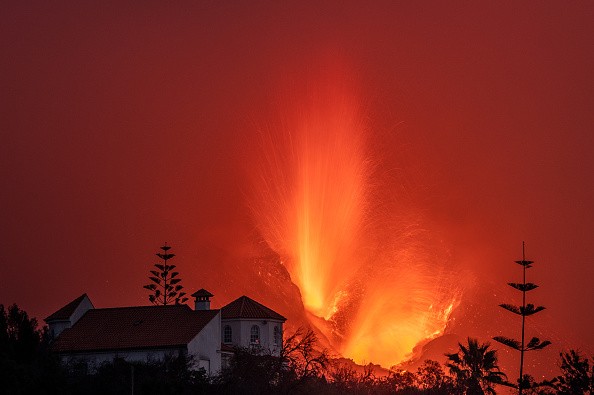Emerging effects as a result of the eruption at Cumbre Vieja volcano are being felt from both above and below.

La Palma Volcano
Tremors and less intense earthquakes are constantly making the ground vibrate. And the plume of ash from the volcano rising from the peak is now persistent and sometimes more explosive. Since the eruption started on the 19th of September 2021, it has destroyed more than a thousand homes and buildings.
On the 4th of October at 1:40 p.m. Western European Time, an astronaut on the International Space Station captured a picture of La Palma's south end. The slanting camera angle gives a three-dimensional view of the way the plume from the volcano moves above and over clouds of low level.
The Advanced Spaceborne Thermal Emission and Reflection Radiometer (ASTER) on the Terra satellite belonging to NASA got a false-color picture of the eruption with a mixture of red, infrared, and green wavelengths in the late morning that same day.
In the picture, red is the vegetation, and lava flows are brown to black. Those watching from the ground also caught footage of the volcano discharging ash on the 9th of October and unexpected lava flows this week.
Code Red Declared For Aircrafts
The Toulouse Volcanic Ash Advisory Center declared a code red for planes moving through the area as of October 9 morning. Plumes were attaining 2-3 kilometers (1 to 2 miles) in altitude.
The eruption has not been very active to the extent that it can release great amounts of gases and ash into the stratosphere. They can have powerful and persisting effects on weather and climate while in the stratosphere.
As per news reports, airborne ash is responsible for the intermittent shut down of the airports on La Palma and even other Canary Islands.
At ground level, air quality is episodically bad and this depends on the direction and intensity of the wind. And ash coming down from the sky has blanketed some of the salt flats in La Palma, disturbing efforts at the production of salt.

How Long will the Eruption Last?
At the ending of September, the Instituto Volcanológico de Canarias (INVOLCAN) scientists proposed that there is a possibility of the present eruption persisting for weeks to months. The last time Cumbre Vieja erupted was about 50 years ago.
The Spanish National Geological Institute said on Sunday, there were chains of 21 seismic movements and the largest measured 3.8.
The lava from the volcano has affected over 1,180 buildings and more than 490 hectares of land since the eruption started and most of the land is used to cultivate bananas which are the major crops on the island. The north side of the volcano collapsed late Sunday, prompting a more rapid flow of lava, Local media reported.
Related Article : La Palma Volcano Increases its Explosive Power, Roaring Louder and Emitting Thicker Lava
For more news, updates about volcanic eruption and similar topics don't forget to follow Nature World News!
© 2025 NatureWorldNews.com All rights reserved. Do not reproduce without permission.





